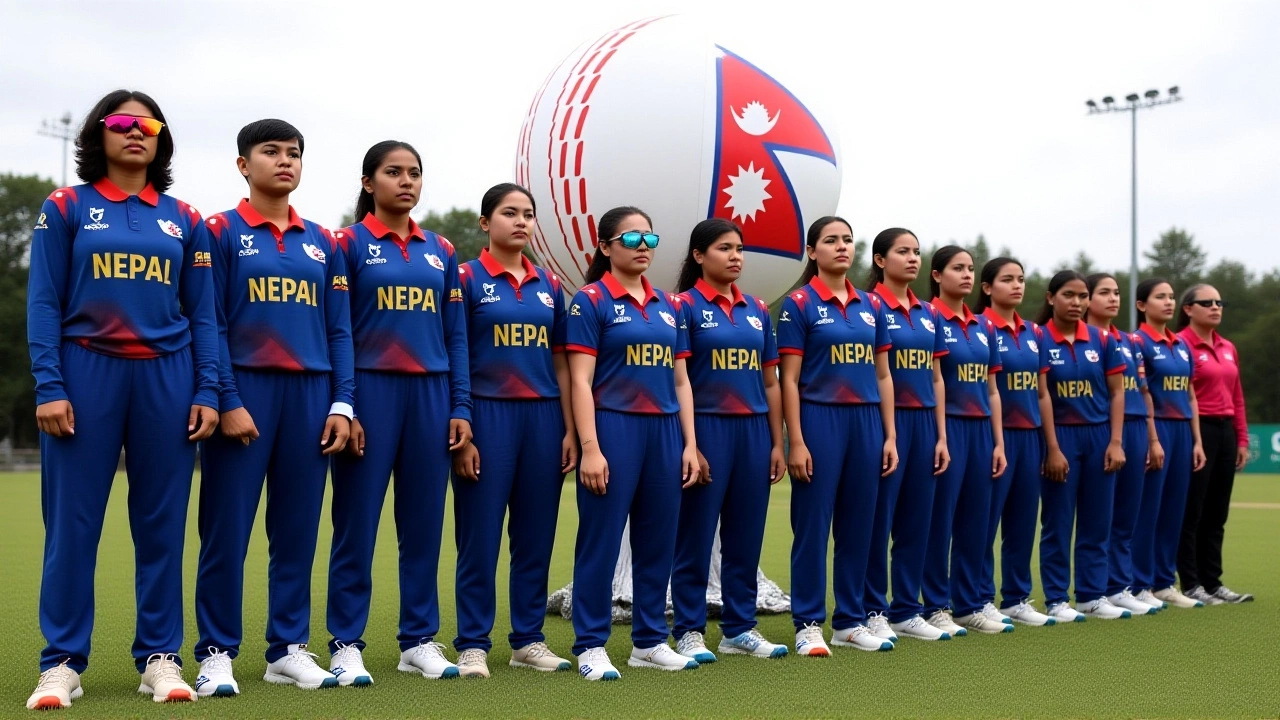
When India lifted the trophy for a second straight year at the U19 Women's T20 World Cup, the cricketing world took notice not just for the dominant performance but for the remarkable stage‑hand that Malaysia provided. The 2025 edition, staged from 17 January to 2 February, unfolded across Kuala Lumpur and Sarawak with 41 matches, and for the first time saw four nations – Malaysia, Nepal, Nigeria and Samoa – make their debut on the global ICC platform.
tournament overview: dates, format and the road to Kuala Lumpur
The International Cricket Council announced the schedule on 18 August 2024, laying out a group stage, a Super Six phase and knockout rounds. Sixteen teams were split into four groups, each playing a round‑robin. The top three from each group advanced to the Super Six, where points carried over, before the semifinals on 30 January and 31 January and the final on 2 February at the UKM YSD Cricket Oval.
Groups were a blend of cricket powerhouses and newcomers: Group A featured Australia, Sri Lanka, Scotland and Nepal; Group B hosted India, Ireland, the United States and Nigeria; Group C saw England, Bangladesh, Samoa and New Zealand; Group D comprised South Africa, Pakistan, West Indies and the host Malaysia. The mix set the stage for several "firsts" and surprise upsets.
debutant nations make history
For Nepal, the highlight was a 7‑wicket win over host Malaysia in the group stage, a result that sent their fans into a frenzy. "We came here to learn, but we also wanted to prove we belong," said Nepal captain Rita Gurung after the match. It was Nepal’s first victory at an ICC global event, and it sparked increased interest in women's cricket back home.
Nigeria’s triumph over New Zealand was perhaps the biggest shock of the tournament. The African side chased down a modest target, edging out the Kiwis by three wickets. Coach Chinwe Okonkwo emphasized the significance: "This win shows that with proper pathways, African girls can compete with the best. It’s a milestone for cricket on the continent." It was Nigeria’s inaugural appearance at any ICC women's global tournament, underscoring the rapid rise of the sport in West Africa.
Samoa, after clinching the East Asia‑Pacific qualifier in May 2024, experienced a roller‑coaster. While they suffered a crushing defeat to South Africa – bowled out for just 16 runs, the lowest total in the event – they also posted a respectable 40‑run effort against New Zealand, showing that exposure at this level can be a catalyst for development.
key performances and record‑breaking moments
India’s campaign was highlighted by two standout individuals. Vaishnavi Sharma delivered the tournament’s best bowling figures, ripping through Malaysia’s batting line‑up for 5 / 5. Her spell turned the tide in the group match and set the tone for India’s dominant run.
Meanwhile, Gongadi Trisha amassed 309 runs, including a blistering 110* against Scotland, earning her the top‑run‑scorer award. "Every ball felt like a chance to make a statement for my country," Trisha said in a post‑final interview.
South Africa’s bowlers, led by Kayla Reyneke, who claimed 17 wickets, were the tournament’s leading wicket‑takers. Their consistency helped South Africa reach the final, where they fell short after India’s comfortable chase.
Australia, though not in the final, displayed firepower with an 83‑run demolition of Nepal in Bangi on 22 January, posting 139/6. The match underscored the gap between established programs and emerging ones, yet also served as a benchmark for the newcomers.
venue highlights and Malaysia’s hosting milestone
Malaysia’s role as the first Southeast Asian nation to host a global ICC women's event was a game‑changer. Matches at the UKM YSD Cricket Oval and Bayuemas Oval in Kuala Lumpur drew full houses, while the Sarawak venues in Kuching offered scenic backdrops and enthusiastic local support. The logistical success earned praise from ICC officials, who noted the country’s ability to deliver high‑quality facilities on short notice.
Local businesses reported a noticeable uptick in tourism revenue, with hotels in Kuala Lumpur reporting a 22 % occupancy rise compared to the same period in 2023. "The World Cup gave us a reason to showcase our hospitality," said hotel manager Ahmad Zaman of the Grand Central. Such economic spill‑over is likely to encourage other emerging cricket nations to bid for future events.
broadcast, media coverage and fan engagement
ESPN secured exclusive broadcasting rights across the Caribbean, streaming every match on ESPN+ and simul‑casting the semifinals and final on its linear channel. Social‑media metrics showed a 35 % increase in cricket‑related conversations in Malaysia during the tournament, with the hashtag #U19WomenWorldCup trending locally on Twitter.
Fan zones set up at shopping malls in Kuala Lumpur offered interactive games and meet‑and‑greets with players, bridging the gap between the sport and a younger audience. "I’ve never watched women’s cricket before, but seeing these kids play made me want to try it," said a first‑time viewer at a Klang mall.
reactions, future outlook and ICC’s expansion plans
After the final, ICC president Geoffrey J. Gregson lauded the tournament’s success, noting that "the inclusion of debutant nations is exactly the kind of growth we envisioned for women’s cricket." He hinted at a broader regional rotation for future editions, with the 2027 tournament still awaiting a host announcement.
India’s captain, Shreya Singh, highlighted the importance of nurturing talent at the junior level: "Winning is great, but the real victory is seeing more girls from places like Nepal, Nigeria and Samoa on the field. That’s the future of our sport."
For the debutants, the experience will likely feed into their domestic structures. Nepal’s cricket board announced a new under‑19 women's league slated for 2026, while Nigeria’s federation plans to invest $2.3 million in grassroots coaching programs.
what lies ahead for the young stars?
With the tournament concluded, the spotlight now shifts to senior squads. Trisha, Sharma and Reyneke are all on the radar for senior national call‑ups, and their performances have already sparked interest from franchise T20 leagues abroad. If the trend continues, the next generation of women cricketers could see a blend of international exposure and professional opportunities that were unimaginable a decade ago.
Frequently Asked Questions
How did the debutant teams perform compared to the established nations?
While the newcomers faced steep learning curves, Nepal’s win over Malaysia and Nigeria’s upset against New Zealand demonstrated that they can compete. Their performances, though inconsistent, provided valuable experience and highlighted the growing depth of women’s cricket beyond traditional powerhouses.
What was the most memorable individual performance of the tournament?
Vaishnavi Sharma’s 5 / 5 spell against Malaysia stands out as the finest bowling display, while Gongadi Trisha’s 309 runs, highlighted by a 110* knockout, made her the tournament’s top‑run‑scorer.
Why is Malaysia’s hosting significant for cricket’s global growth?
Malaysia became the first Southeast Asian nation to stage a global ICC women’s event, proving that high‑quality cricket infrastructure exists outside the traditional strongholds. The successful organization boosted tourism, sparked local interest, and sets a precedent for future bids from emerging markets.
What are the ICC’s plans for the next U19 Women’s T20 World Cup?
The ICC aims to rotate the tournament across new regions, with talks underway to award the 2027 edition to a host that can further expand women’s cricket in Asia or Africa. They are also looking to increase the number of qualifying spots for associate members.
How can fans follow the tournament’s highlights and future matches?
All matches were streamed on ESPN+, with highlights uploaded to the ICC’s official YouTube channel. Social media accounts @ICC, @cricketmalaysia and @espncric keep fans updated on scores, player interviews and upcoming events.



